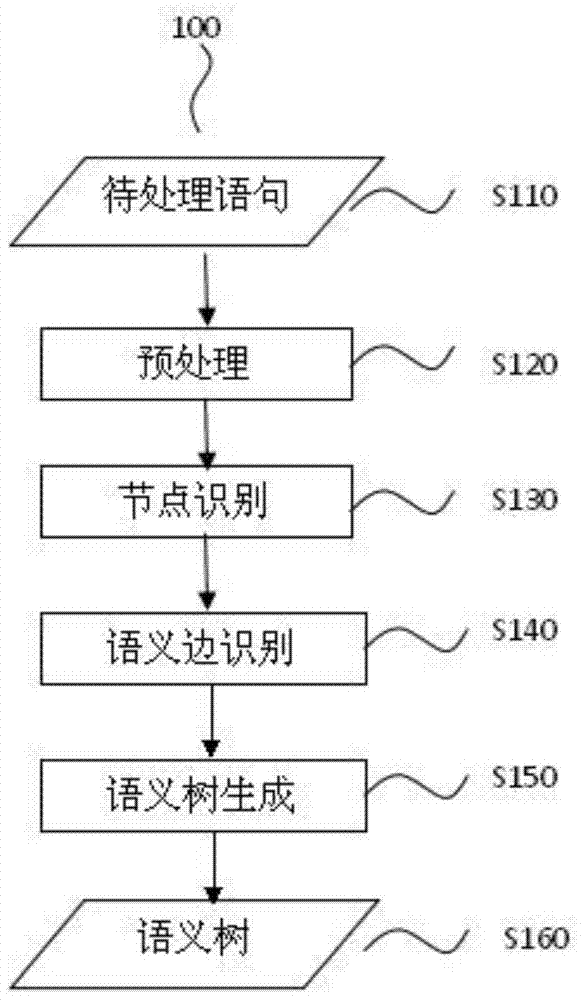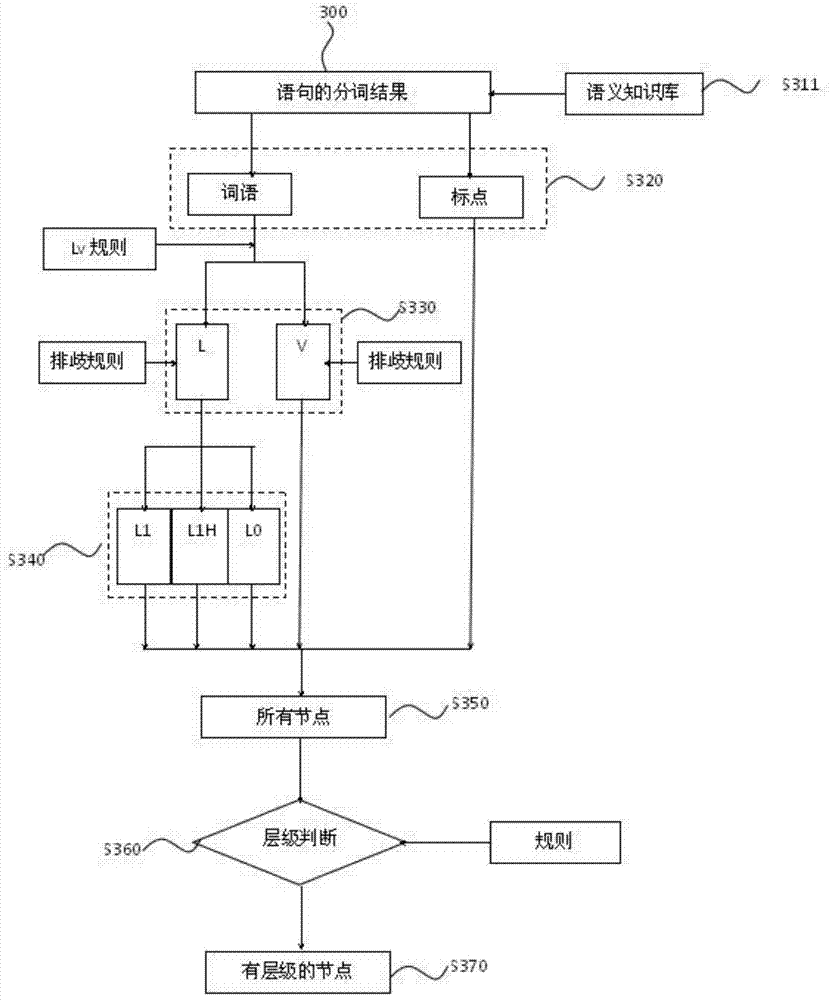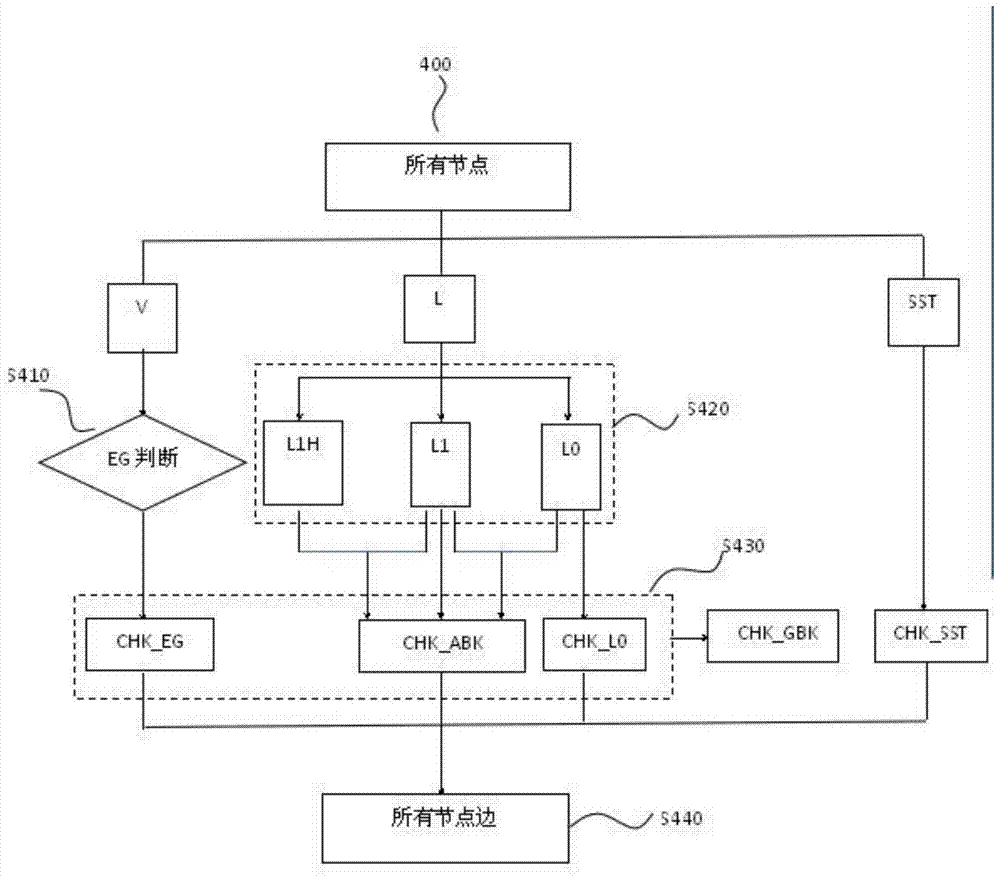A method and system for constructing a hierarchical semantic tree for language understanding
A construction method and language understanding technology, applied in the field of hierarchical semantic tree construction methods and systems, can solve problems such as not necessarily ideal effects, strong domain dependence, and effect discounts, and achieve the effect of improving readability and accuracy
- Summary
- Abstract
- Description
- Claims
- Application Information
AI Technical Summary
Problems solved by technology
Method used
Image
Examples
Embodiment 1
[0047] Provide a kind of hierarchical semantic tree construction method and system for language comprehension in the present embodiment, semantic tree is the semantic structure tree, is for a sentence in natural language, refers to the feature word block (core verb) in a sentence lexical chunk) and the semantic relationship between other chunks determined by it. For example, the characteristic chunk V in a sentence is a verb expressing action, which determines that there must be actor chunks, object chunks, and content chunks in this sentence. Only in this way can the semantics of the sentence be complete. Although one of the latter three can be omitted in a certain context, these four chunks are the necessary components for the complete semantics of a sentence, and they are also called main chunks. In contrast, auxiliary language chunks are not necessary components for the establishment of a sentence, but mainly express the way, means, way, condition, time, etc. of an action....
Embodiment 2
[0077] A specific method for constructing a hierarchical semantic tree is given in this embodiment, and the basic flow of the scheme is also as follows figure 1 As shown, the method 100 for constructing a hierarchical semantic tree in this embodiment begins at step S110 by inputting the sentence to be processed, and then preprocessing the sentence to be processed in step S120, that is, performing word segmentation on the sentence to be processed according to the domain dictionary and the general dictionary, and loading Semantic knowledge of words, semantic knowledge mainly includes six generalized concept classes of words, namely V (dynamic), G (static), W (object), P (person), U (attribute), L (logic) and Several subcategories under its overall planning; secondly, in step S130, identify the semantic nodes of the statement and distinguish its levels, the first step is to use the LV rule to identify all semantic nodes to the result after word segmentation, the second step It is...
Embodiment 3
[0111] A specific application example is given in this embodiment, Figure 4 and Figure 5 is a diagram illustrating the result of building a hierarchical semantic tree for an example sentence. Such as Figure 4As shown, the sentence to be processed is "the web browser uses the uniform resource locator to send the HTML request to the server controlled by the system.", and the semantic tree structure at the clause level is: GBK1 "web browser" + ABK "use uniform resource The locator "+L0" sends the "+GBK2" HTML request "+EG" to "+GBK3" the server controlled by the system", wherein the CHK_SST (period) block serves as the root node. The semantic nodes of the first level are L1 (use), L0 (will), V (send to), all three levels are 0; the semantic edges of the first level are CHK_ABK (Use Uniform Resource Locator), CHK_L0 (will ), CHK_EG (sent to), CHK_GBK (web browser, HTML request, remote server), the six language block levels are all 0, and it hangs out as a child node of the r...
PUM
 Login to View More
Login to View More Abstract
Description
Claims
Application Information
 Login to View More
Login to View More - R&D
- Intellectual Property
- Life Sciences
- Materials
- Tech Scout
- Unparalleled Data Quality
- Higher Quality Content
- 60% Fewer Hallucinations
Browse by: Latest US Patents, China's latest patents, Technical Efficacy Thesaurus, Application Domain, Technology Topic, Popular Technical Reports.
© 2025 PatSnap. All rights reserved.Legal|Privacy policy|Modern Slavery Act Transparency Statement|Sitemap|About US| Contact US: help@patsnap.com



